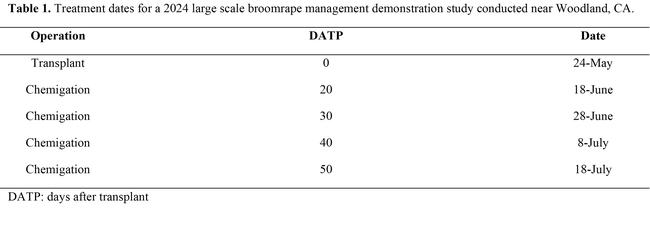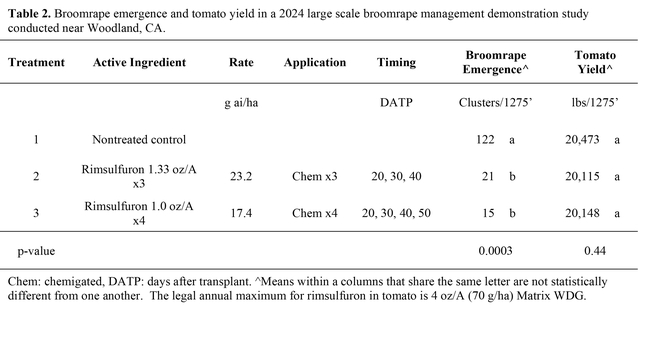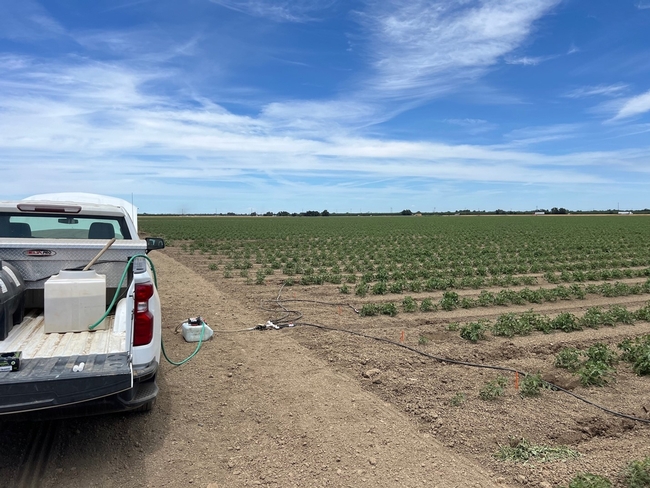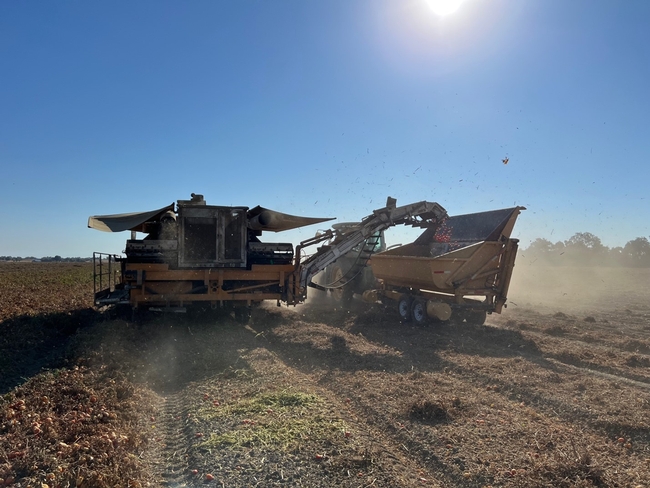Large scale demonstration of chemigated rimsulfuron treatments for branched broomrape control in California processing tomato
Matthew Fatino, Brad Hanson
Plant Sciences Department, University of California, Davis
Branched broomrape is an obligate holoparasite that can attach to a wide variety of agricultural crop hosts, including tomato. It has been reported in numerous California commercial processing tomato fields in recent years and is of growing concern to the tomato industry in the state. In late 2022, a 24c Special Local Need (SLN) label was approved for broomrape management with chemigated Matrix (rimsulfuron). Rimsulfuron is widely used a foliar treatment for broadleaf weed control, and this label addendum allows its use as a chemigated treatment targeting branched broomrape. Small plot field trials with several variations of the rimsulfuron chemigation protocol were conducted in 2023 and 2024 in an infested field near Woodland, CA, that has a well-characterized branched broomrape population. To validate those small plot results, a larger scale demonstration study was conducted in a different branched broomrape infested field located near Woodland, CA, during the 2024 growing season.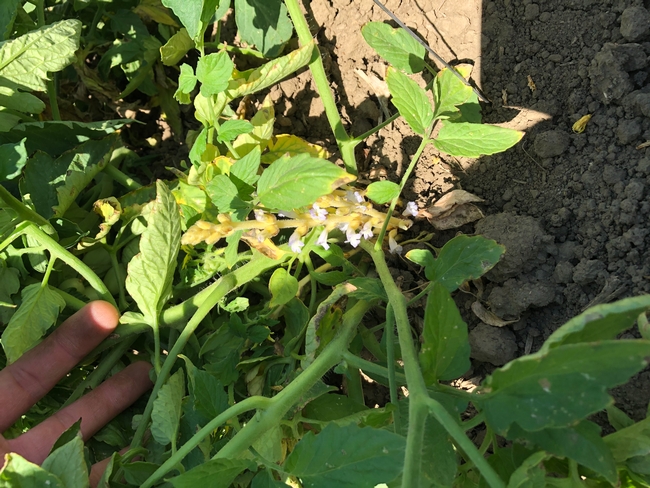
Materials and Methods
This trial was conducted within a commercially planted processing tomato crop and treatments included a three-treatment protocol similar to the 24c SLN Matrix label and a four-treatment protocol; both protocols' applications totaled the annual maximum of 4 oz/A (70 g/ha) rimsulfuron. The field was set up with raised beds with a single 7/8” (22 mm) drip line buried 12” (30 cm) deep in the center of the bed with 0.16 gal hr-1 (0.6 L hr-1) emitters spaced every 12” (30 cm). Individual plots were 1275' (390 m) long and arranged in a randomized complete block design with three replications. ‘HM 8237' tomato transplants were mechanically transplanted with 12” (30 cm) in-row and in-line spacing with two lines on each bed. Chemigation treatments were mixed in a 26 gal (100 L) tank and applications were made into individual beds with an electric pump during the last third of an irrigation set (Figure 1). Treatments were applied according to a days after transplant schedule and are listed in Table 1.
In the 2024 demonstration study, broomrape emergence was evaluated four times throughout the growing season and tomato yield was collected using a Johnson commercial mechanical harvester (Oxbo, Woodland, CA) and weigh cart equipped with a scale (Figure 2). Tomato yield per 1275; (390 m) plot was collected at commercial maturity on October 2, 2024.
Results and Discussion
In the large-scale demonstration study, there was no visual tomato crop injury observed in any of the treated plots (data not shown). Both chemigated rimsulfuron treatments had reduced broomrape emergence versus the nontreated control (Table 2). The control plots had an average of 122 clusters per 1275' plot, while rimsulfuron applied three times at 1.33 oz/A (22.3 g ai/ha) resulted in 21 clusters per plot and rimsulfuron applied four times at 1 oz/A (17.4 g ai/ha) resulted in 15 clusters per plot (Table 2). There was no statistical difference in broomrape emergence between the two chemigated rimsulfuron treatments and both reduced broomrape by greater than 83% compared to the control (Table 2). Tomato yield ranged from 20,114 lbs (9,143 kg) to 20,473 lbs (9,306 kg) per 1275' plot and there was no significant difference between rimsulfuron-treatments and the control (Table 2). Given the significant reduction in broomrape emergence with both chemigated rimsulfuron treatments and saleable fruit yield that was comparable to the control plots, these results could encourage growers to adopt the 24c rimsulfuron protocol as a preventive treatment in fields at-risk of branched broomrape infestation. This research was supported by funding from the California Tomato Research Institute and the CDFA Specialty Crops Block Grant Program and we would like to acknowledge our generous grower cooperator for farming and harvest support.
Figure 1. Chemigation system with 26 gal tank and electric pump injecting herbicide solution into single bed plots at approximately 20 days after transplant (DATP). Injections were made at approximately 20, 30, and 40 DATP for the 1.33 oz/A rimsulfuron treatment and 20, 30, 40 and 50 DATP for the 1.0 oz/A rimsulfuron treatment.
Figure 2. Commercial tomato harvester and weigh cart harvesting full-bed (1275 ft long) plots
